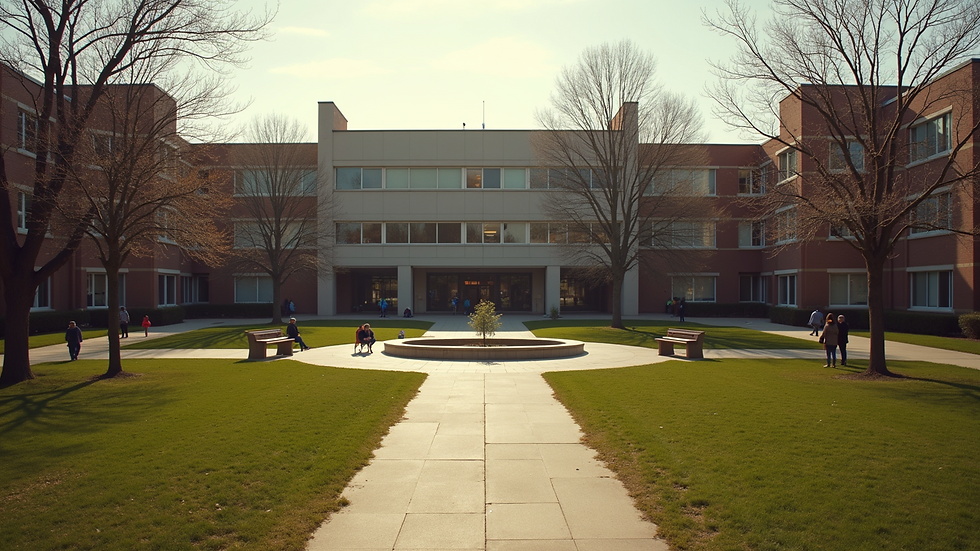Achieving Mobilisation Mastery in Academic Transitions While Upholding Excellence and Budget Constraints
- Maxcene Crowe

- Aug 18
- 3 min read
Navigating transitions in a university or college setting requires a delicate balance between operational efficiency and the continuous promotion of academic excellence. The mantra of "Mobilisation Mastery" reflects the need for a strategic approach that respects the unique dynamics of educational institutions. This article dives into optimising facilities management transitions to maintain academic excellence while providing valuable solutions to common challenges faced by educational entities.
Academic Institution Challenges
Academic environments are characterised by a multitude of challenges, particularly when adjustments are necessary.
One of the primary concerns is the academic calendar. Transitions must be carefully timed around term and semester schedules to minimise disruption to students and faculty. Therefore, having academic-specific mobilisation timelines is crucial in ensuring that transitions do not collide with critical periods in the educational year.
Budget limitations also play a significant role in the operational decision-making processes within educational institutions. With strict financial parameters in place, it becomes essential to maintain high service expectations without exceeding budgetary constraints. Thus, resource-efficient mobilisation strategies that maximise value become a necessity.
Moreover, there is a complex stakeholder environment that must be navigated during any transition. The expectations and interests of various parties, including students, faculty, administration, and governing bodies, can often complicate matters. Comprehensive stakeholder management frameworks tailored to academic environments are essential to ensure all voices are heard and considered throughout the transition process.
Specialised facility requirements further add another layer of complexity. Educational institutions often house unique facilities like laboratories, libraries, and research centers with specific operational needs that ordinary spaces do not encounter. Therefore, specialised mobilisation protocols for different facility types within academic settings are key to a successful transition.

Our Solution: Academic-Specific Mobilisation Timelines
To address the challenge of academic calendar constraints, our solution involves developing academic-specific mobilisation timelines that align closely with term and semester schedules. This approach ensures that critical transitions take place during breaks when disruption to students and faculty is minimised.
Our Solution: Resource-Efficient Mobilisation Strategies
Understanding budget limitations in academia is paramount. Our resource-efficient mobilisation strategies focus on maximising value while working within tight financial constraints. By conducting thorough assessments of existing resources, we optimise every dollar spent, providing institutions with the best possible outcomes for their investments.
Our Solution: Comprehensive Stakeholder Management Frameworks
The complexity of stakeholder environments in universities and colleges necessitates a comprehensive stakeholder management framework. In our approach, communication is at the heart of this framework. Engaging with diverse stakeholders early and often ensures their concerns are heard and appropriately addressed, which leads to smoother transitions.
Our Solution: Specialised Mobilisation Protocols
With many educational institutions housing specialized facilities, having customised mobilisation protocols is indispensable. For instance, laboratories often require specific environmental conditions to function optimally. By creating mobilisation strategies tailored to each facility type, we ensure these unique needs are met without compromising operational integrity.
Academic Success Stories
The effectiveness of our solutions is best illustrated through success stories from institutions that have achieved seamless transitions.
"MCFM's academic-focused mobilisation program helped us transition our entire campus facilities management during summer break with zero disruption to the start of fall semester," shares Dr. Michael Chen, Facilities Director at State University.

In another instance, Professor Sarah Williams, Dean of Research at a Technical Institute, remarked, "The specialized training for our facilities team on managing transitions in research environments was invaluable. We maintained critical environmental conditions throughout the transition."
An equally compelling testimonial comes from a community college: "As a community college with limited resources, MCFM's budget-conscious approach to mobilisation helped us achieve a smooth transition while staying within our constraints."
These testimonials exemplify how tailored mobilisation strategies can lead to transformative outcomes in academic institutions.
Conclusion
Achieving mobilisation mastery in academic transitions involves a multifaceted approach grounded in understanding the unique challenges of universities and colleges. By implementing academic-specific mobilisation timelines, resource-efficient strategies, comprehensive stakeholder management, and specialised protocols, educational institutions can enhance their facilities management transitions while upholding exceptional academic standards.
As you consider transitioning within your own institution, remember that a thoughtful and strategic approach to mobilization is key to maintaining the essential balance between operational efficiency and academic excellence. Your institution can seamlessly navigate these transitions and continue to thrive in an ever-evolving educational landscape.

.png)


Comments